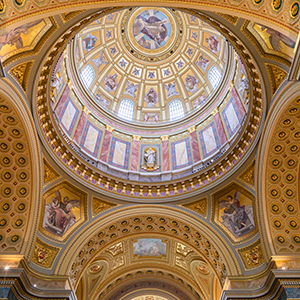On holiday, I met a fellow photography enthusiast. I was quite surprised when he told me that he shoots JPEG, following the online advice from Ken Rockwell. After we discussed the merits of RAW, I promised that I would publish an article on my blog.
When I returned home, I was intrigued to understand the advice that Ken Rockwell provided, and was a bit shocked by what I found. Here are some direct quotes from Ken’s article JPG vs RAW: Get it Right the First Time:
“I never shoot raw. Why would I? Raw is a waste of time and space, and doesn’t look any better than JPG even when you can open the files.”
“Image quality is the same in JPG and raw.”
“Please just don’t take it personally that I prefer to get my shots right the first time instead of having to tweak them later.”
“Don’t pay too much attention to sales demos showing how you can restore details in highlights for a shot that was overexposed by a critical half stop. First off, no one really is so bad a studio photographer that they’d actually overexpose a series of studio shots by a half a stop and not know it on a digital camera.”
My personal experience is that, even when you are trying to produce a JPEG image for online display, being able to control the conversion process from RAW to JPEG (rather than the camera doing it automatically for you) gives you much better control to create the JPEG image that you want to create. However, a much bigger reason for shooting in RAW is future-proofing your images for the new High Dynamic Range (HDR) world.
A RAW file is the unprocessed image data captured by a digital camera’s sensor, whereas JPEG is a processed image (after processing has been performed by a camera or editing software). The JPEG standard was created in 1992 by the Joint Photographic Experts Group. While the original JPEG standard has enjoyed a long period of dominance in the display of images on the Internet, this format is set to become obsolete in the coming years. That’s because original JPEGs are unable to adequately support the wide dynamic range that can be captured by today’s camera sensors or offer the small file sizes that can be achieved by next-generation image formats such as AVIF.
A huge difference between a RAW file and a JPEG file is the dynamic range that is stored. On a per-scene basis, today’s cameras (using RAW) can capture much, much more of the dynamic range that is seen by the human eye. JPEG and RAW are not identical if you expose correctly – getting shots “right first time”. The issue is that many scenes in real life have much more dynamic range than can be captured by JPEG. By shooting in RAW, the photographer:
- can make decisions when creating a JPEG image, rather than all those decisions being made by the camera’s inbuilt JPEG processing
- can store images for posterity with the full dynamic range originally captured by the camera’s sensor, allowing High Dynamic Range images using next-generation formats to be created.
I enjoy taking photographs of churches and cathedrals. In many scenes, I am often confronted with dark interiors (the “shadows”) and bright light from the sun streaming through stained-glass windows. There’s really no such thing as a perfect exposure with JPEG as it simply cannot capture the full dynamic range of the scene photographed. With RAW, I get to store images with their wide dynamic range still intact, while processing images to JPEG produces noticeably superior results to JPEG capture. That’s because I am better able to adjust images to:
- avoid ‘blowing out’ highlights (for example, vibrant stained-glass windows)
- minimise noise
- avoid losing shadow detail.
In all my experiments, shooting in JPEG has resulted in noticeably poorer images, however careful I have been with the exposure.
The value of RAW will increase further with the widespread introduction of true High Dynamic Range photography. Just as High Dynamic Range has been revolutionising the movie and TV businesses, true High Dynamic Range will revolutionise the photography industry and online content. With the increasing availability of displays in smartphones, monitors and TVs that can display very high brightness levels together with the introduction of new HDR-compatible image formats (such as AVIF), photographers will be able to take their images to ‘the next level’.
By shooting in RAW, photographers are able preserve the wide dynamic range captured by their cameras so that images can be displayed in all their glory on HDR displays using next-generation image formats. By shooting in JPEG, photographers close the door to this possibility. Their JPEG images are set to look bland and dated compared with true-HDR alternatives that will quickly populate websites, search listings and online sharing platforms.
For more information about true HDR photography, with some examples, visit my HDR Photography page.



